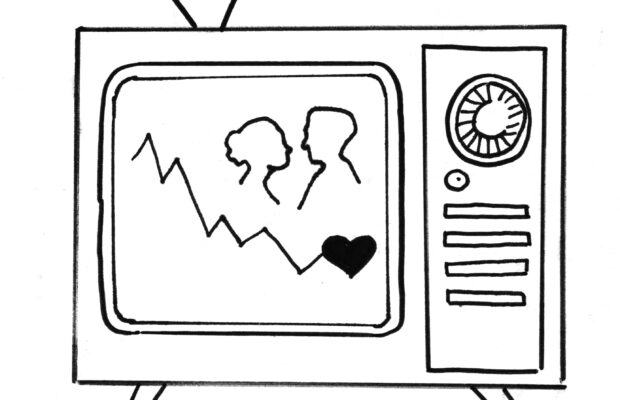Our favorite media relationships are corrupting us

At the young age of 13, I read my first romance novel. I quickly became addicted to the drama and passion that became my escape from reality. This obsession continued into shows and movies, while my book collection was constantly growing. However, as I have gotten older, I have realized that these stories were not displays of “true love,” but of toxic relationships. I was simply falling in love with the idea of love.
All the relationships I was idolizing revolved around the idea of a young girl who was expected to change the male character’s inappropriate behavior. As an audience member, I adored this interdependence as it all relates to the desire of feeling special. A perfect example that displays this romanticized abuse is Chuck Bass and Blair Waldorf’s relationship from the hit T.V. series “Gossip Girl.” Simply put, Chuck is a rapist who coerces girls into sex through whatever means necessary. These women were victims of Chuck’s perception of entitlement to women’s bodies. The audience, however, becomes smitten by the idea that Blair can change the “troubled man” and then roots for their relationship against all odds.
Time and time again, Blair attempts to get Chuck to confess his true feelings to her, however, he only does so after abandoning her and putting her through intense emotional turmoil. They then start a relationship as if nothing has happened. This simple romantic gesture is enough for Blair and the audience to excuse the physiological abuse he has just put her through.
Authors and scriptwriters have lost sight of the difference between passion and abuse. Each character and relationship is a scripted story to create drama and maintain audience attention; these characters do not exist in reality. If a significant other expresses abusive behavior, one should not be expected to take on the role of “the fixer” and wait for the other to change. While I understand that these authors create complex dynamics and elaborate ethics, it needs to be recognized how impactful this is on the particular age range of the common audience.
“The Vampire Diaries” has been my comfort series and obsession ever since I can remember. I was engrossed with the fast-paced and scandalous nature of the supernatural show. One of the most adored relationships is between the orphaned 17-year-old human girl, Elena Gilbert, and the 200-year-old vampire and “bad boy,” Damon Salvator. He is first introduced as the vicious and heartless vampire who murders innocent humans for his own enjoyment, the complete opposite of his brother, Stefan Salvator. Throughout the complex love triangle between the three, the majority of the audience was seduced by Damon as he has a “soft spot” for only Elena. Damon protects her at all costs, even if it means threatening the lives of others or turning her into a vampire against her will.
A main connection between the two was doing unspeakable things to each other that were merely excused with a romantic gesture. When Damon kills one of Elena’s friends, they acknowledge how toxic they are for one another, yet the scene ends with a passionate kiss. The idea that they have an all-consuming love glorifies the emotional abuse Damon forces Elena to endure time and time again.
The reason our developing brains become attached to these relationship dynamics stems from our desperation for happy endings. We crave the comfort it gives us, making us justify these abusive relationships. Instead, we need to instill the ideas that these audiences, mainly young women, have a say in their relationships and will not be taken advantage of.


